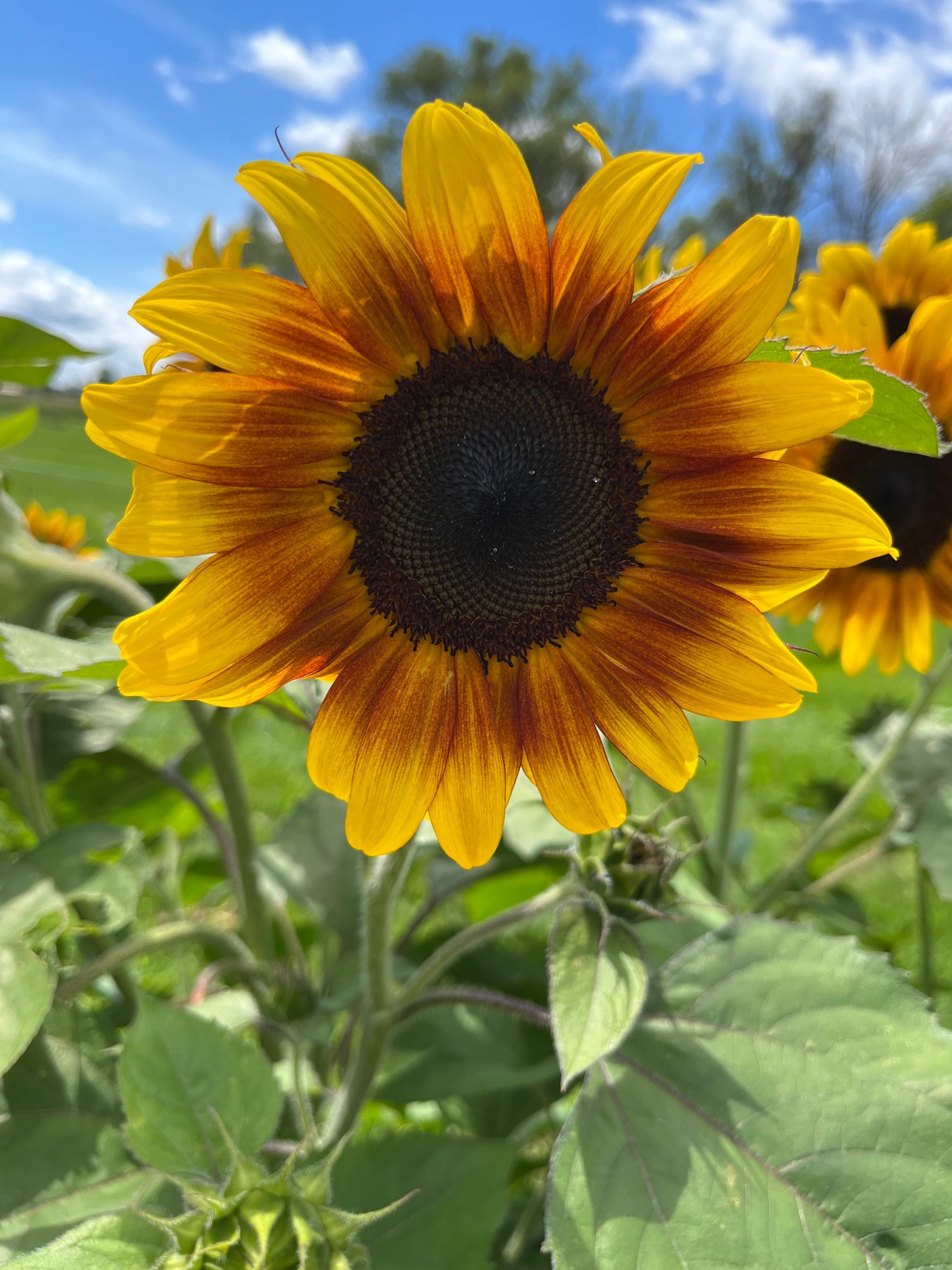Sunflowers
Sunflowers are an easy-to-grow, fun, native plant that make a wonderful addition to any garden. No longer just the standard, tall yellow flower, they come in a wide range of colors from pale yellow to deep red and are available in dwarf, branching, and giant sizes.
Native to North America, sunflower (Helianthus annuus) is believed to have been domesticated from wild sunflowers around 1000 B.C. in what is now the western United States. Native Americans used sunflowers well before colonization; Spanish, English, and French explorers collected seeds and took it to their respective countries. By 1580 they were a common garden flower in Spain. They traveled along trade routes and eventually became a premier oilseed crop in Russia and Ukraine.
There are two types of sunflowers: oilseed for vegetable oil production and non-oilseed for human and bird food production. Oilseed varieties are usually black-seeded with a thin hull. Non-oil seeded flowers, referred to as confectionary sunflowers, have white striped, larger, and thicker seeds. The leading producer of sunflower products is Ukraine, followed by Argentina. The United States is the eleventh-largest producer worldwide, with leading producers being the Dakotas, Kansas, and Minnesota.
For the backyard enthusiast, sunflowers perform many functions. They are prolific pollinator attractors, unless the few non-pollen varieties are planted. They provide season long blooms, a playhouse for children when planted in a circle, and abundant food for wildlife.
Sunflowers prefer full sun and are heliotropic (follow the sun, east to west) until the stems stiffen and they get too heavy with seeds to move. They prefer well-drained soil and will grow in most soil types. Once established, they are fairly drought tolerant. In an especially dry year, it is best to give them some supplemental water several weeks before and after flowering to ensure the roots are well established and prevent toppling over in wind.
Direct sow seeds, planting an inch deep and at least six inches apart for the varieties that are 2–5 feet tall, a foot apart for taller varieties, and two feet apart for the “giant” varieties. Seeds will germinate in 7–10 days. For a constant display of color from mid-summer through fall, either plant several varieties that have different maturity dates or the same variety in one-to-two-week intervals.
With so many choices, there is a sunflower for everyone. There are pollenless sunflowers that are useful for cut flowers, although they provide absolutely no benefit for pollinators. The branching cultivars spread out more and require more space (plant 18–24 inches apart), but produce abundant blooms over a long period of time.
Dwarf cultivars are less than three feet tall and work well in small spaces or along borders. Semi-dwarf cultivars are 3–8 feet tall and can be worked into most home landscapes.
Giant cultivars will grow 8 feet tall or more. Occasionally these will need to be staked. Speaking from experience, the stems of these can grow to be as big as your forearm and will require some muscle when it is time to remove the root.
To harvest, cut the entire head once the flower has faded. Place it in a paper bag and put it in a dry, dark, but warm place. Allow it to dry thoroughly before using the seeds for wildlife or human consumption.
Carol Shirk
Certified Master Gardener
